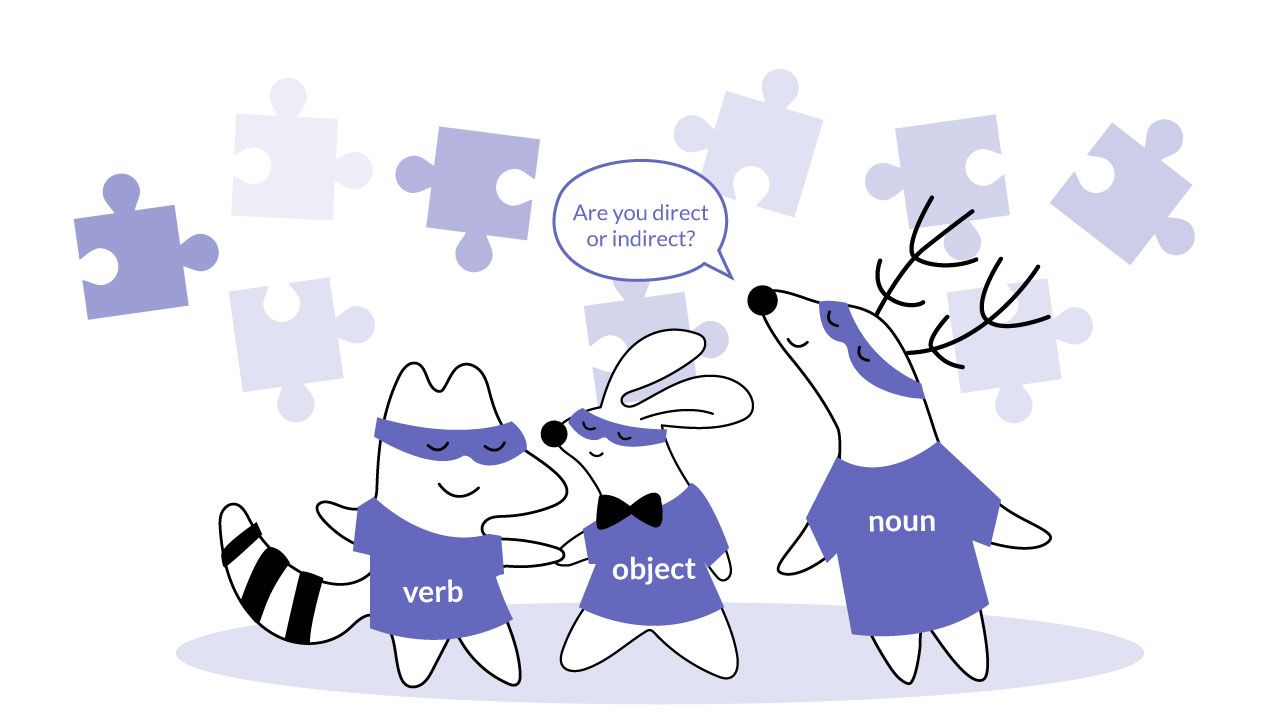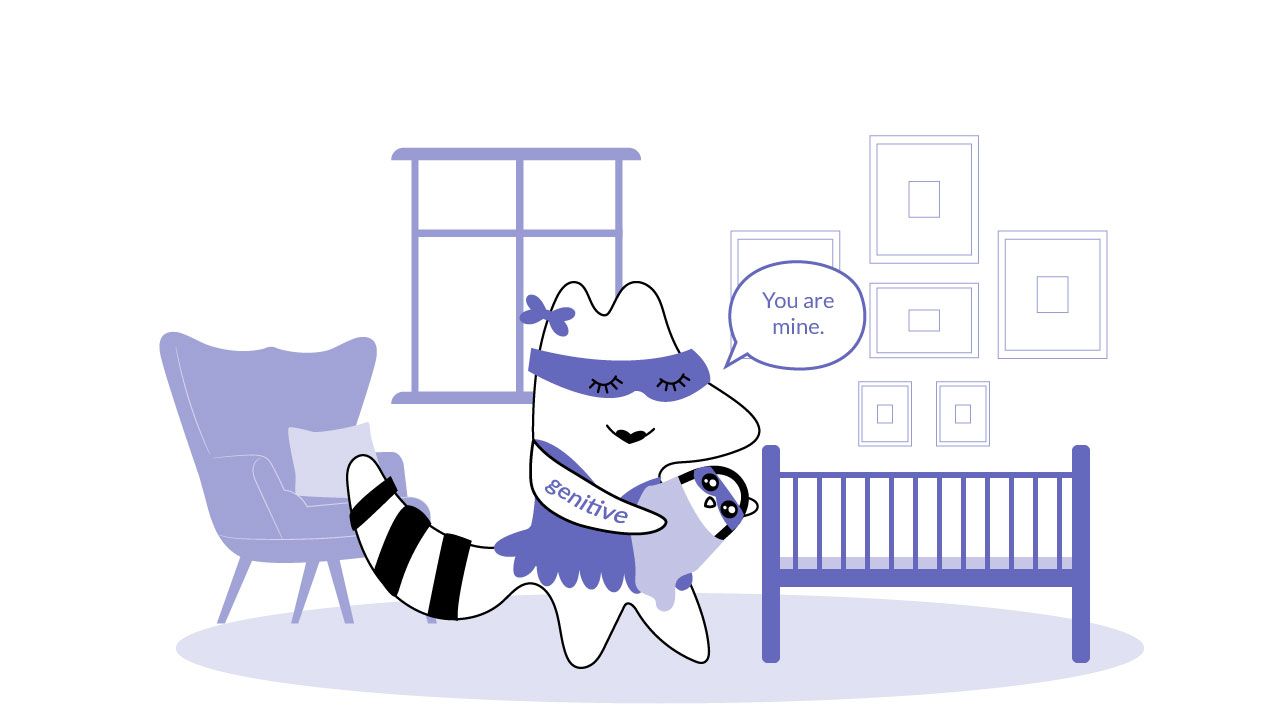
There are approximately 7000 languages in the world, according to linguists. While some of them share vocabulary words, others share a grammatical system. Many languages, particularly those descended from Latin, base their grammar on a case system.
If you want to learn German, you must first study the German case system, which is the foundation of all German grammar. If you have read our previous post about German articles, you will see that understanding how German cases work is essential.
In this post, we'll go over the fundamentals of the case system that you should be aware of when first learning German. We will not discuss the plural or indefinite articles in this post as it might be too complicated for now.
Read on and don't give up if you don't understand everything right away - with good examples and some practice, you should get a sense of the case system quickly.
First of All: What Is a Case System?
A case system describes the relationship between several nouns in a sentence. Every noun stands in a specific case to indicate its role in the sentence (subject, indirect object, direct object, etc.) and make the listener understand the meaning.
In English, there is no case system. Let’s have a look at the following sentence: “The girl gives the book to the boy.” You know who gives the book to who because of the preposition “to.” In German, there would not be a preposition but the article “the” would take a different form.
As a result, a case system makes you see how the nouns interact with each other. Now, depending on the language, there can be different cases. The German case system comes from Latin and has four cases in which the nouns can be.

The Four Different Cases in German
The four German cases are nominative, genitive, dative, and accusative, but people also call them first, second, third or fourth cases. The order doesn’t mean anything - all cases are equally important. It is just essential to know which case has which number.
Now, we will show you all the German cases in the order and tell you more about each of them. It might not seem very clear at first, but the English language actually has a similar structure. You will see parallels that will help you understand how the German cases work.
1. The Nominative Case (der Nominativ)
The nominative case is known as the first case in German, and it describes the subject of the sentence. It could be seen as the simplest case in German grammar as it does not change any of the sentence parts' form.
That means that you can use the nominative case without even noticing it by simply creating a phrase that has a subject. It does not matter how many parts the sentence has; the subject is always in the nominative case. The noun does not change, and you will use the regular articles "der, die, das” with it.
Examples for the Nominative Case
Native
Translation
Die Frau lacht.
The woman laughs.
The woman is the subject of the sentence, so the noun "Frau" stands in the nominative case. Because of that, its feminine article "die" does not change in any way and stays in its regular nominative form.
Native
Translation
Die Frau gibt dem Mann das Buch.
The woman gives the book to the man.
Even though the sentence has more sentence parts now, the subject is still "die Frau" (the woman), so it stays in the nominative case.
2. The Genitive Case (der Genitiv)
The genitive case is called the second case but it is the least known of all German cases. It has been disappearing for a few decades because people started to replace it with the dative case. Nevertheless, it has its role in the sentence, and you should try to use it when possible.
In English, you might describe the genitive case as possessive. The case indicates the object that owns something. The genitive makes the sentence parts change their form, and every gender changes differently. It will be easier to show you some examples.

Examples for the Genitive Case
Native
Translation
Das ist der Hund der Frau.
That is the woman's dog.
You can see that "the woman" has a possessive role in this sentence because she owns the dog. While "the dog" (der Hund) stands in nominative because it is the subject of the sentence, "the woman" is "der Frau" because it is used in the genitive case.
You can indicate the genitive case primarily by changing the noun's article. The three articles "der, die, das" change in the following way:
der -> des die -> der das -> des
We will use the same sentence from above to show you how the other genders change.
Native
Translation
Das ist der Hund des Mannes.
That is the man's dog.
Das ist der Hund des Kindes.
That is the kid's dog.
The man is "der Mann" in German, and so it is masculine, while "the kid" is "das Kind,” which is a neuter noun. You can see that the genitive case changes both genders the same way. The articles "der" and "das" change to "des."
You probably also noticed that the noun changed its form a little bit. "Der Mann" and "das Kind" changed into "des Mannes" and "des Kindes." The ending -es indicates the genitive case, but you will only find it in masculine and neuter nouns.
3. The Dative Case (der Dativ)
The dative case is known as the third German case and is the one that changes the sentence parts' the most. When you know how differently gendered words change form, you can identify the noun's role in the sentence faster.
The dative case describes what you know as an indirect object from English and other languages. You can find indirect objects mostly when there are two objects in one sentence. If there is just one object in the sentence, it is almost always a direct object. Let us clear this up with an example.
Examples for the Dative Case
Let us show you similar sentences to illustrate the differences between the genders:
Native
Translation
Ich gebe dem Mann das Buch.
I give the book to the man.
Here, you can see that there is the subject "I," and then there are two objects. "The book" is the direct object, and "the man" is the indirect object, which is put in the dative case.

You can distinguish between the two by knowing that the direct object mainly receives an action while the indirect object is affected by the action. As a result, the indirect object is a recipient of the direct object, like "the man" in our example receives "the book."
We will show you now how the different genders change with the dative case and how it looks like when there is just one object in the sentence:
Native
Translation
Ich helfe der Frau.
I help the woman.
Ich helfe dem Mann.
I help the man.
Ich helfe dem Kind.
I help the kid.
The subject is "I," while "the woman," "the man," and "the kid" are indirect objects. As in the other example, they are receiving an action. They are receiving help.
As you might see, the role of the noun depends mainly on the verb. Certain verbs cause certain cases. The following verbs cause accusative or dative for example:
- brauchen (need), sehen (see), suchen (look for) + accusative
- helfen (help), gehören (belong), zuhören (listen to) + dative
4. The Accusative Case (der Akkusativ)
The last case is known as "the fourth" or "accusative case." It puts the noun into the role of a direct object, which is the most common object in German sentences.
The accusative case only changes the form of the masculine nouns, which might be less to learn but also harder for you to identify in the sentence.
Examples of the Accusative Case
Native
Translation
Ich rufe die Frau.
I call the woman.
Ich rufe den Mann.
I call the man.
Ich rufe das Kind.
I call the kid.
You see that the subject is "I," and the direct object is "the woman," "the man," or "the kid." All objects are direct objects and stand in the accusative case as they are affected by the action. They are called.

Let's Bring It All Together
Now that we’ve gone through all the different cases, we want to show you how they all can appear in one sentence and how you can identify the case of every German noun.
Native
Translation
Das Kind der Frau gibt dem Mann das Buch.
The woman's kid gives the book to the man.
You can see all four cases inside this sentence. We have:
- das Kind - nominative case
- der Frau - genitive case
- dem Mann - dative case
- das Buch - accusative case
In the beginning, it might be difficult to use the correct case while speaking because you also have to juggle word order, vocabulary, German verbs, and pronouns. This shouldn’t be a problem for long - it might be helpful to learn how to identify German nouns and their cases in written German first.
You can also practice with the Langster app that helps language learners understand how German phrases should look like with all the German pronouns, nouns, verbs, etc. Check out the short stories there and get familiar with the real German language.
We hope you keep having fun learning German - and remember, you’ve just made it through the most difficult part! Bis bald!









